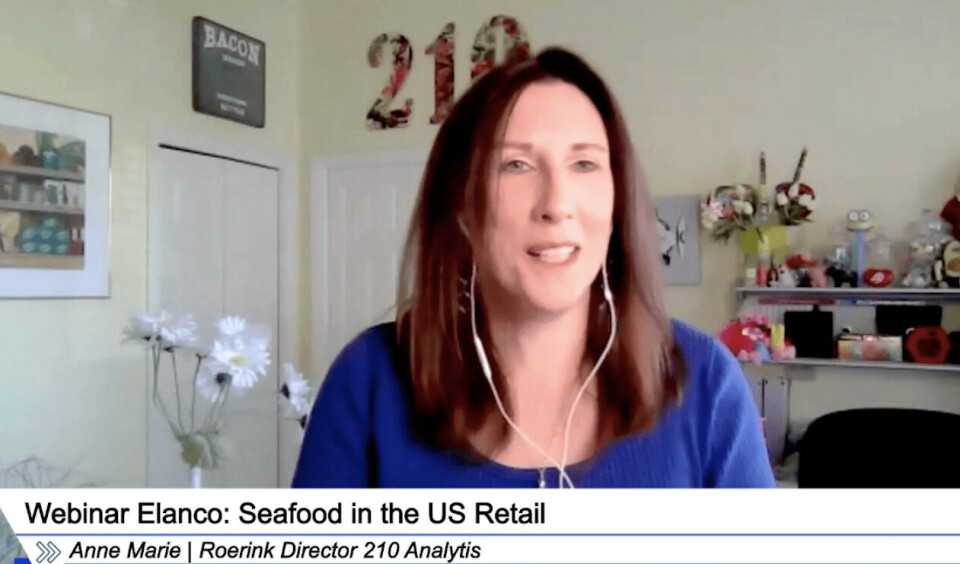
Salmon holding its own in US despite inflation
Salmon is remaining competitive with United States consumers from a price per pound point of view, despite being 15.9% more expensive than a year ago, a seafood specialist has said.
Anne-Marie Roerink was speaking in the latest edition of the Elanco-organised online seminar “Seafood in the US Retail” yesterday.
Roerink, director and founder of 210 Analytics, talked about the evolution of the seafood market during the first half of 2022, a period in which inflation and supply problems were the main concerns of US consumers.
Cost-saving measures
“In June 2022, 96% of consumers reported paying more for food, compared to last year,” said Roerink. “Of this percentage, 97% have some concern about this rise. Basically, every American is very aware of inflation, and 81% are implementing cost-saving measures like looking for private labels, using coupons or special sales to stay within their budget.
“On the other hand, the image of seafood is that of a premium food vs. other proteins, and that is what is worrying us at the moment.”
Roerink said that when making a tour of retail stores she was able to notice cost-effective options, allowing the use, for example, of discount coupons for fresh seafood.
“Regarding inflation, in the second quarter of this year, the price of food and beverages increased by 11.9% compared to the previous quarter, and 23.1% compared to the same quarter of 2019, pre-pandemic,” said the seafood expert.
“Regarding seafood, the price of fresh, frozen and canned products increased by 12.1%, 10.1% and 9.7%, respectively. Salmon remains in a competitive state from a price/pound point of view, but inflation is coming in much later than beef, which is starting to moderate now. The current price of a pound of salmon, in the second quarter, is $10.72, 15.9% more than the same period last year. Even so, it is a price that has remained stable compared to other proteins such as beef, pork or chicken.”
Ready-to-go dishes
Roerink said North Americans are not used to preparing seafood at home and prefer to eat it in restaurants.
“For this reason, retailers are helping buyers in the choice of the product and how to prepare it. In addition, a lot of emphasis has been placed on ready-to-go dishes, with fresh products and store pickup. Sixty-one percent of consumers have expressed the need to reduce spending in restaurants but have restaurant options on supermarket shelves to prepare at home.
“Retailers have innovated a lot in that area, in particular with salmon options that can be prepared on the grill, something that North Americans really like, particularly at festive events. Many stores also have sushi dishes, sashimi, salads with fresh salmon.”
Health message
In relation to the availability of salmon, Roerink said that it fell by 2.5% for fresh, 5.1% for frozen and 3.4% for canned.
Despite the higher prices, salmon continued to lead consumer preferences in the second quarter of this year salmon, with $665 million in sales, 9.8% more in the first half of 2022 than last year and 38.1% more than the second quarter of 2021.
One of the trends seen in retail is to emphasise how healthy seafood is. “89% of Americans agree that seafood is healthy, not only for people, but also for the planet, due to its low carbon footprint and its sustainability. Many stores are providing this information to consumers,” said Roerink.






















































